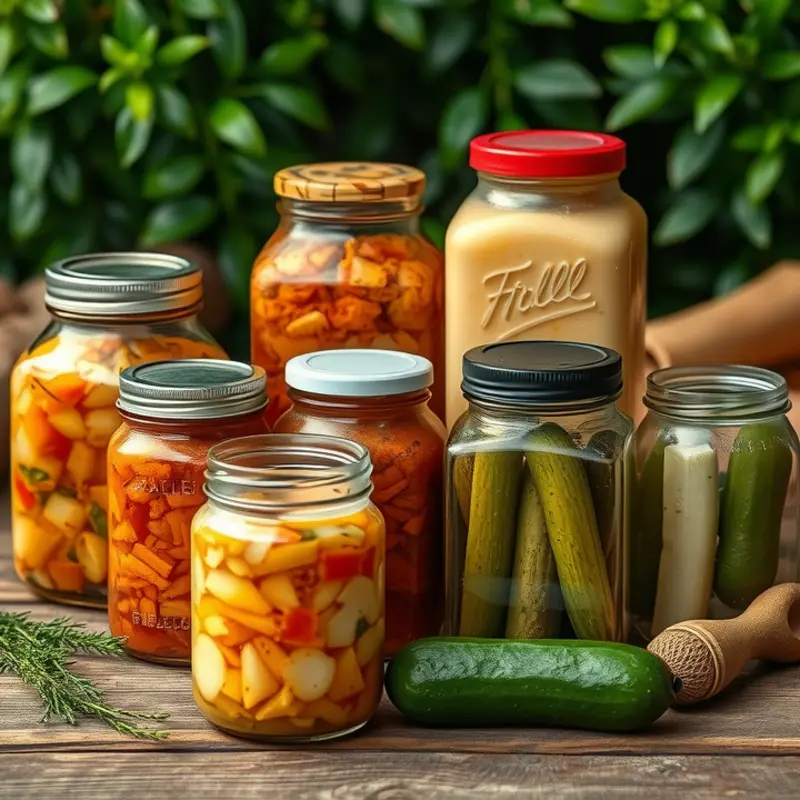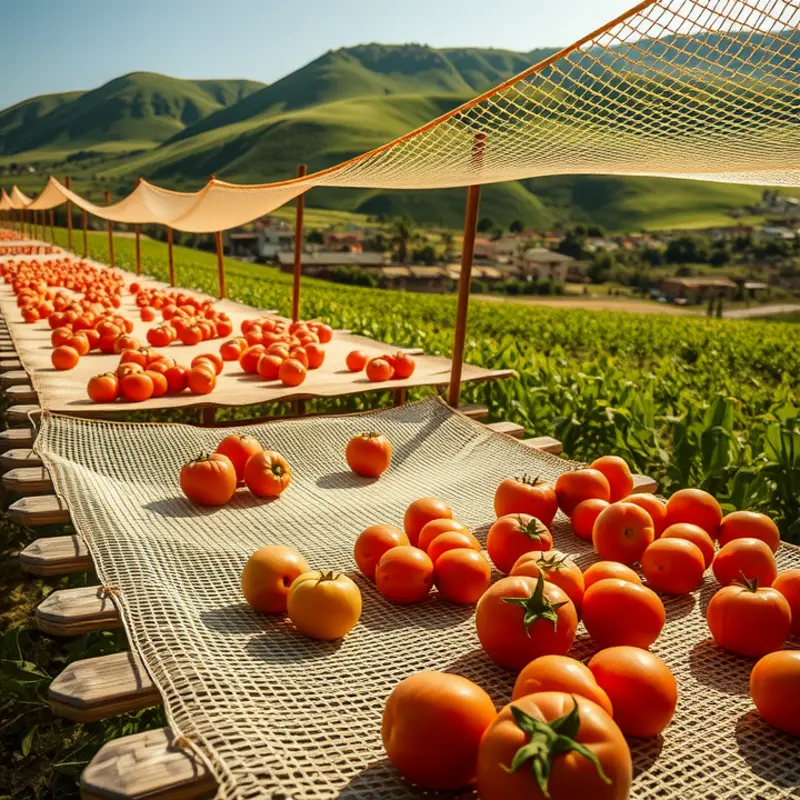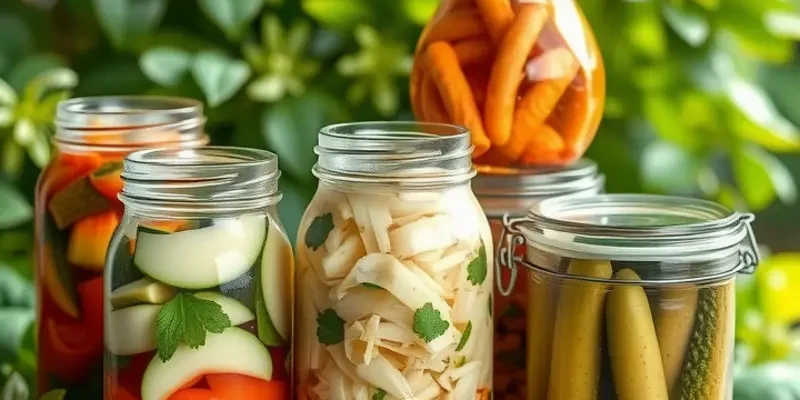Food preservation is as old as civilization itself. From fermented delights to sun-dried treasures, each method tells a unique story about culture, survival, and innovation. This exploration delves into the rich tapestry of global preservation techniques, showcasing how different cultures have found ingenious ways to extend the life of food and celebrate seasonal abundance. Join us as we embark on a journey through time and traditions, discovering the fascinating methods that continue to influence modern culinary practices.
Fermentation: The Art and Science of Preserving with Live Cultures

Fermentation is more than a method to extend shelf life; it’s a transformative process that infuses depth and nuance into cuisine. Across the world, from the fiery depths of kimchi jars in Korea to the earthy undertones of German sauerkraut, fermentation operates at the heart of cultural culinary practices. This ancient technique brings different societies together around the shared table of tradition and taste.
At the core of fermentation lies a complex dance of microorganisms—yeasts and bacteria—that convert sugars into lactic acid, alcohol, and other compounds. This microbial alchemy not only gives fermented foods their distinctive tang but also preserves and enriches them with nutrients and probiotics. These live cultures are beneficial bacteria that support gut health and enhance immune function, transforming simple ingredients into digestible superfoods.
Consider Korean kimchi, a staple that begins with napa cabbage, radishes, and a rich paste of gochugaru (chili flakes), garlic, and ginger. As these elements ferment, they develop layers of spicy, zesty, and slightly sweet flavors. The result is a dish that warms body and soul, embodying the spirit of Korean heritage in its fiery bite.
In contrast, German sauerkraut showcases the subtle interplay between cabbage and salt. Left to ferment in spacious crocks, the cabbage metamorphoses over weeks into a sharp, tangy side dish. This transformation illustrates the magic of simple ingredients becoming greater than their parts, all through the wonders of natural fermentation.
While kimchi and sauerkraut are well-known, other regional specialties each tell their own story. Africa’s fermented millet porridge, Asian natto, and South America’s pickled vegetables embody community and shared experiences. Every jar and crock is a vessel of history, preserving traditions across generations.
Fermentation’s appeal extends beyond taste. Its benefits attract many with a passion for healthful eating. Foods like yogurt, kefir, and miso offer probiotics, which can support digestion and gut health. Discover more about probiotic alternatives in our non-dairy probiotics guide.
The resurgence in homemade fermentation also sparks community connection. Workshops and online forums introduce enthusiasts to the craft of fermenting their own vegetables, yogurts, and beverages. Sharing these creations invites others into a world of diverse flavor profiling and wellness exploration.
For those embarking on fermentation, it’s a journey marked by patience and discovery. While many ingredients require exotic preparations, others merely need time to reach their peak. Experimenting with temperature, salt levels, and aging times provides endless possibilities and personal tweaks that can turn a simple fermented product into your signature dish.
As fermentation continues to thrive globally, it remains a testament to human ingenuity. This process of controlled decay not only sustains but elevates, turning ordinary ingredients into culinary masterpieces. With each bite, you taste history’s long corridor, full of the whispers of cooks who stirred, waited, and tasted before passing their secrets down through time.
Sun-Drying: Nature’s Dehydrator Across Cultures

Sun-drying, one of humanity’s oldest preservation techniques, finds a place in diverse culinary traditions. This method leverages the sun’s heat to remove moisture, concentrating flavors and safeguarding nutrients. Across warm climates, where the sun generously bathes the earth, this technique has been a staple due to its simplicity and effectiveness.
In Italy, sun-cured tomatoes are a quintessential ingredient, known for their intense sweetness. This process involves laying ripe tomatoes on wooden racks under the Mediterranean sun, transforming them into culinary gems that enrich sauces and salads. The Italian climate, with its hot, dry summers, is ideal for sun-drying, allowing for consistent results without the worry of mold or spoilage.
In Asia, sun-dried fish is crucial in many coastal communities. From India to the Philippines, fish is laid out under the sun, preserving it for months without refrigeration. This method not only extends the shelf life but also deepens the umami flavor, a perfect addition to stews and curries. The cultural significance of dried fish in these regions is profound, entwined with local livelihoods and gastronomic preferences.
The climatic conditions essential for successful sun-drying include high temperatures, low humidity, and consistent sunlight. These factors ensure that moisture evaporates quickly, reducing the risk of bacterial growth and spoilage. For communities in arid regions, such as parts of Africa and the Middle East, sun-drying becomes a natural extension of harvesting, aligning with the rhythms of the growing season.
Cultural significance aside, sun-dried foods offer practical benefits and modern culinary applications. Sun-dried tomatoes, for example, can be rehydrated and blended into spreads or incorporated into bread doughs for an aromatic boost. For those looking to incorporate bold flavors without adding salt, dried foods can serve as intense flavor enhancers in various dishes.
Modern chefs often experiment by using sun-dried elements to provide surprising twists to contemporary dishes. Adding sun-dried fruits to desserts can introduce unexpected textures and flavors, creating delightful contrasts with creamy or fresh ingredients. Sun-dried vegetables and herbs infuse oils and vinegars, offering new dimensions to dressings and marinades.
Sun-drying connects communities to nature’s cycles, echoing the passage of time through the sun’s journey across the sky. This technique reflects a harmonious balance between human needs and environmental offerings, reinforcing the connection to earth’s natural rhythms. By embracing sun-drying, cultures across the globe honor their culinary heritage while adapting these methods to fit modern tastes and dietary practices.
Final words
Throughout history, food preservation methods have served not just as practical techniques but as vital aspects of cultural identity. From fermentation’s transformative powers that pepper our plates with tangy and complex flavors to the age-old practice of sun-drying, which captures the sun’s essence for seasons to come, these techniques offer a bridge between the past and the present. As we continue to explore and incorporate these time-honored practices into modern culinary experiences, we pay homage to the creativity and resourcefulness of cultures around the globe, ensuring their stories and flavors endure for future generations.








